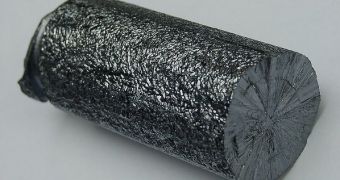A new scientific paper shows that, soon, silicon-based chips could no longer need electrical current to operate. The work details the advancements that were made in controlling electrons' spin, as opposed to their charge. At this point, microchips must absolutely have electrical current in order to handle data, but the near future may see similar devices, with the same performances, being powered by only a small fraction of these power demands. The work appears in the November 25 issue of the respected scientific journal Nature.
The team behind the innovation explains that their achievement was in fact fairly simple. They managed to inject electrons into silicon chips, at room temperature, and control the processor by making most of the electrons spin in the same direction. This is a very different approach from existing technologies, which rely on the electron's charge to move and handle data inside the processor. The new method makes use of the magnetism or spin of the elementary particles, rather than its electrical properties. This new field of research is called spintronics and is considered to be the next big thing.
Electrical fields are extremely suited to manipulate data and so on and this is the main reason why they have been in use over the past few decades. “But there are now increasing concerns that this progress may come to a halt,” Dutch physicist Ron Jansen, from the University of Twente, in Enschede, says. Researchers are beginning to near the end of our existing technology's miniaturization capabilities and so new methods to move forward need to be developed. The largest problem with spintronics is that semiconductor materials, the kind used in processors, are not the most suited of the bunch to keep electrons' spins aligned. In other words, the particles are ill-behaved in them.
The team managed to inject electrons at room temperature by adding a single, thin layer of aluminum oxide between the silicon and the magnetic material. Previous studies had used two or more such layers, which wreaked havoc in the alignment of the electrons. According to Shinji Yuasa, the achievement is highly likely to set a new standard in the industry. He is a researcher at the Tsukuba, Japan-based National Institute of Advanced Industrial Science and Technology, Nature News reports.

 14 DAY TRIAL //
14 DAY TRIAL //